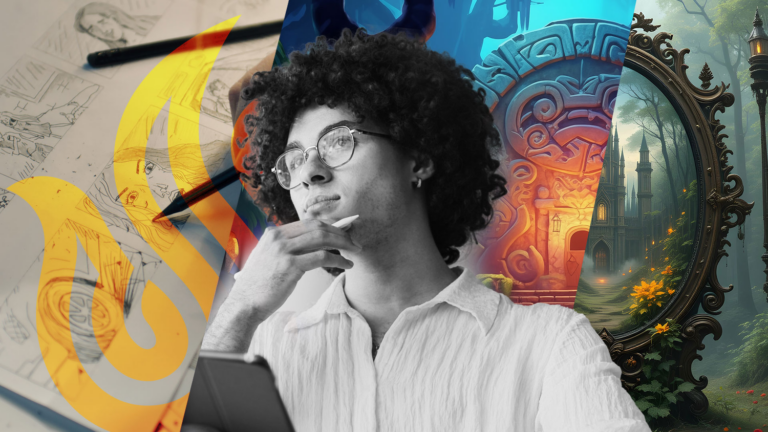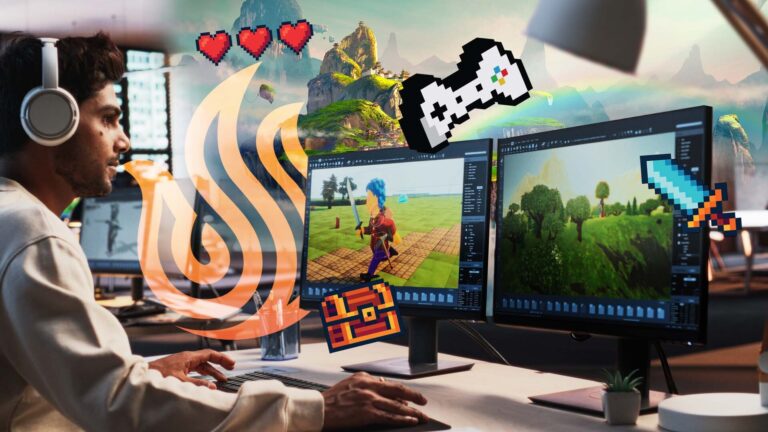The art of 3D modeling can open many doors should you take the time to hone your craft. Animation projects in a 3D environment comprise a large portion of today’s entertainment. In addition to working on fictional stories and spectacle, you can also apply 3D modeling to a variety of other jobs outside of the digital realm. Computing technology has influenced all forms of production and business. A career in 3D modeling gives you the tools needed to take full advantage of the computer science trends that will be in demand for the foreseeable future.
What Does a 3D Modeler Do?
As a 3D modeler, you have multiple responsibilities. These responsibilities depend on your experience level, scope of the project, and the size of the team you are collaborating with. Your job could be to craft 3D models and other assets, or you may need to pitch in on other aspects of development. For instance, getting hired early on in the project lifecycle could mean contributing to story boards and other pre-production processes. Storyboards are like comics that explain the basic premise of each scene to everyone in an animation studio. You do not have to excel at drawing by hand, as storyboard art is crude and unpolished in the interest of time. As long as each panel conveys what the final product should look like, the team can make the end result shiny and professional.
In addition to creating models, you may be tasked with finishing assets. This means adding textures, shaders, and other details to complete the look of each object or character. You could also be tasked with adding environmental details or light sources to liven up a scene.
What Jobs Require 3D Modeling?
The ability to create 3D models offers many career prospects for you to consider. Here is a breakdown of the key jobs you can review upon graduating from a creative arts college degree program.
Job #1: Video Game Designer
High up on most 3D modeling job lists is the role of video game designer. As the title implies, this job involves creating the interactive entertainment that billions of people around the world have come to enjoy. The profits generated by video games exceed that of movies, music, TV, and other popular forms of media. This means that there are lots of job opportunities available to skilled 3D modelers.
Video game designers code gameplay mechanics, create the levels that players explore, and ensure the overall experience is engaging. This is done with special software known as a video game engine. These robust programs allow video game designers to combine all their coding and art assets into the digital worlds that video gamer players traverse.
Job #2: 3D Printing Technician
3D printing is rapidly disrupting many industries. The ability to create a plethora of objects through efficient digital blueprints is a game changer. Companies need people who can craft intricate 3D models. Creating 3D printing templates is a great opportunity for digital designers who wish to avoid the long production cycles common with video games and other forms of entertainment.
Job #3: Graphic Designer
Graphic design involves making logos, advertising collateral and images appealing. This can be for marketing purposes, informational broadcasts, or just to improve the visual flair of an image. New businesses will always need logos, and anyone with a social media presence will appreciate a graphic designer who can attract more eyeballs to their content. This means you can work on infographics, diagrams, social media posts, video thumbnails, and anything else that could use a touch of creativity.
Job #4: 3D Animator
While animating and modeling may seem like separate roles, each job is remarkably similar and can often be performed by the same person. This is because many animators need to adjust or create the models they work with. Likewise, a modeler can do more with their creations when they learn how to manipulate them to tell a story. 3D artists can develop both skills simultaneously to increase their job prospects. When you enroll in a creative arts degree program, you will touch on both 3D animation and 3D modeling skills throughout the Digital Art and Animation curriculum.
Job #5: 3D Designer
There are a variety of miscellaneous tasks and jobs that can be performed by people with 3D design skills. Companies use 3D models to pitch new concepts and convey ideas to investors. Plus, tech firms are attempting to push the boundaries of virtual and augmented reality, and blockchain and metaverse platforms are starting to take shape. By searching for 3d modeling job opportunities, you are bound to find some interesting and obscure places to work.
Job #6: Architectural Designer
Before architecture is created in earnest, 3D computer models are used to graph out and plan the design of each structure. Modern architects rely on advanced 3D software to craft the boldest and best designs. A digital creation suite also allows for custom builds that are popular among clients. Whether it be fancy new homes or stunning office spaces, architects with 3D modeling talent can find a job as an architectural designer.
Job #7: Instructor
One of the best things about developing a skill is the ability to share it with others. 3D modelers have a unique skillset that is valuable in the modern era of digital media. You can always become an instructor at a creative arts college after a career working on various projects. Each class is taught by someone with industry experience, so 3D modelers looking for a change of pace can help the next generation of digital artists get started.
Job #8: Art Director
Once you have enough professional experience under your belt, you may end up in the role of art director at a studio. The art director uses their extensive knowledge to keep a project running smoothly. There are many people and moving parts required in any creative project. The art director keeps everyone on the same page and ensures all elements of a project match the overall vision laid out in pre-production. In addition to creative knowledge, art directors also deal in budgeting and interacting with the business side.
Where Can a 3D Modeler Work?
Now that you know about the nature of each job, it makes sense to examine the places you can work in as a 3D modeler in various fields.
Animation Studio
Major animation studios such as Pixar or Illumination create their own projects and may fund their entire operation. The dreams and ideas of the artists who work there come to life as movies, TV shows, and animated shorts. These projects often come with huge budgets and lofty expectations. This is the venue in which ambitious artists can push the limits of their talent to make the next smash hit that sweeps across the cultural landscape.
Indie Studio
Indie studios often work on projects with smaller budgets. While that may sound unappealing at first, less money means less strings attached to your workflow. Big budget releases can be bogged down by investor mandates and corporate oversight. When a project is funded by a small studio, they have creative freedom to do as they please. Risks can be taken, and some unique art can be made.
Indie studios often take on contract roles assisting larger projects in between their own productions. These contracts can be for just about any company and serve to fund what the indie designers actually desire to create in the future.
Video Game Studio
Video game studios work on interactive media projects. These can be for home game consoles, mobile devices, or VR headsets. Of all the digital entertainment mediums, video games can have the longest production cycle. A notable feature of working at a game studio is the tendency to stay locked into the same project for five or more years. This is amazing when you are passionate about the game in question, but the workload is not tenable for anyone uninterested in the project. Extra commitment is needed, but the rewarding nature of a finished game project is enough to keep 3D artists coming back.
Films
3D modelers also have a place in traditional filmmaking. The increased use of CGI effects has heightened the demand for digital artists in Hollywood. Special effects are core to the modern movie experience, as evidenced by some of the highest grossing films at the box office. The spectacle present in each title must all be lovingly rendered by a skilled 3D modeler in conjunction with other digital artists.
A Bright Future Awaits
As you can see, developing your talent as a 3D modeler will lead to numerous career paths. The cool part is that you can easily switch course and perform many of the above jobs throughout your career. The core skills learned during a creative arts degree program can be applied to everything mentioned above. Once you graduate and get your first job, you will enjoy unparalleled flexibility that most professionals can only dream of. The ability to create will take you far, so be sure to practice your talents every single day.
Now that you know which jobs require 3D modeling, want to learn more? University of Silicon Valley’s 3D Modeling focus area has been designed to ensure Digital Arts & Animation degree program students get the most relevant training and access to modern industry tools taught by subject matter experts. You’ll learn professional workflows and create your own 3D models for films, video games and more.
University of Silicon Valley is uniquely poised to offer a meaningful and valuable education for 21st century students. We believe in an education that directly correlates with the work you’ll be doing after you graduate. Interested in learning more? Contact Us today.


